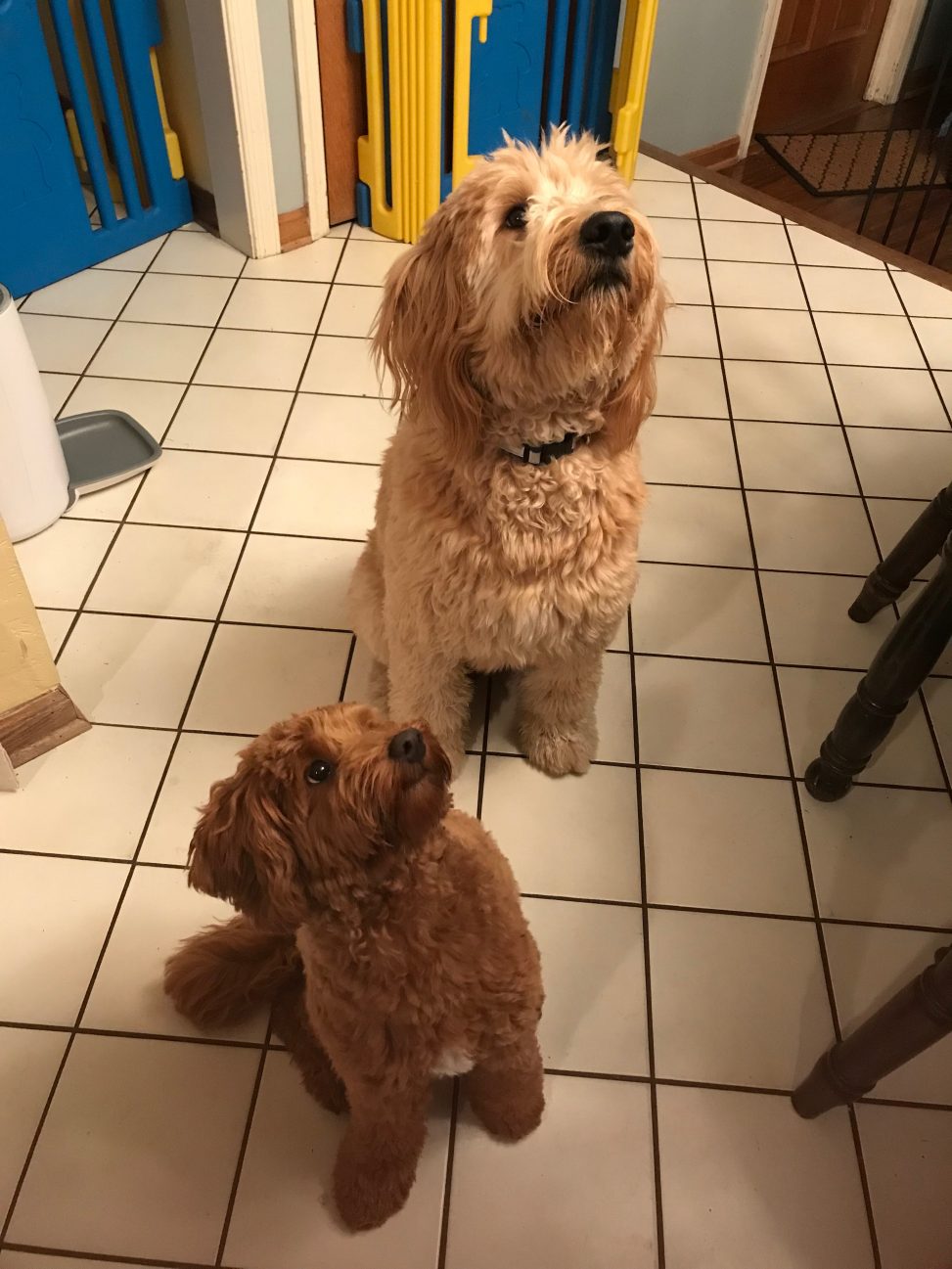I was able to interview Professor Frey from the biology department at Dickinson college and she told me all about her two golden-doodles, Charlie and Sophia. Charlie is a 50/50 mix golden retriever and poodle while Sophia is closer to 75% poodle and 25% golden retriever which makes her significantly smaller. Charlie was raised from a puppy and Sophia was re-homed. They have a funny relationship; Sophia is the alpha in the pair when inside the house, however, this changes when they go outside where Charlie dominates play time. Sophia gets to sit on the furniture more than Charlie and will nip out at him when challenged. Wolves have similar hierarchies and it’s meant to determine who gets access to more valuable items. This behavior is evident only indoors because this is where Sophia has asserted her dominance, while playing outside, Charlie has the upper hand with his size. These complex  relationships between dogs is what connects them so strongly to wolves.
relationships between dogs is what connects them so strongly to wolves.
The linear social pack hierarchy is a common misconception. It is more of a give and take depending on what resources are available to the dogs (Landsberg). This makes sense in Charlie and Sophie’s case; they both dominate in the areas that they are more comfortable in. Sophie is a smaller dog, so she is more comfortable on chairs and beds while Charlie is stronger and better suited for playtime outside.
There is the common theory and understanding amongst dog owners that their animal has descended from wolves. While it is unclear what exactly the origins of dogs are there are clear similarities between dogs and wolves. One theory suggests that the dog evolved from a wolf-dog hybrid and another that there was a different breed of canine that has since gone extinct. (Morell, 64) Either way “The earliest undisputed dog on record, a 14,000-year-old specimen from a site called Bonn-Oberkassel in Germany” (Morell, 66) proves that the relationship between humans and dogs is an ancient one.
Sometimes dogs will try and assert dominance over owners, this could be in order to get more resources and includes behaviors such as staring, barking, and growling (Dealing the Dominance in Dogs). Some dogs will simply accept their role as a family companion and get along very easily. Charlie and Sophia went to some basic dog training classes, so they are not poorly behaved, nor do they challenge for dominance. They do respond to strongly to human commands, when Professor Frey’s brother-in-law comes over their behavior shifts, and they are more afraid of his strict commands. Charlie and Sophia have their own healthy pack dynamic that seems to satisfy the natural need for a social structure and benefits both of them. This is way they are not constantly misbehaving and trying to gain dominance over their owners.
“Dealing With Dominance in Dogs.” SPCA of Texas. https://www.spca.org/Doent.Doc?id=112
Landsberg, Gary M., et al. “Normal Social Behavior in Dogs – Dog Owners.” Merck Veterinary Manual, Merck Veterinary Manual, 2018, www.merckvetmanual.com/dog-owners/behavior-of-dogs/normal-social-behavior-in-dogs. https://www.merckvetmanual.com/dog-owners/behavior-of-dogs/normal-social-behavior-in-dogs#:~:text=Studies%20have%20also%20shown%20that,%2C%22%20vocalizations%2C%20and%20scents.
Morell, Virginia. “FROM WOLF TO DOG.” Scientific American, vol. 313, ser. 1, 2015, pp. 60–67. 1. https://lms.dickinson.edu/pluginfile.php/1420587/mod_resource/content/0/Great%20Intro%20to%20Questions%20FROM%20WOLF%20TO%20DOG.pdf

Leave a Reply